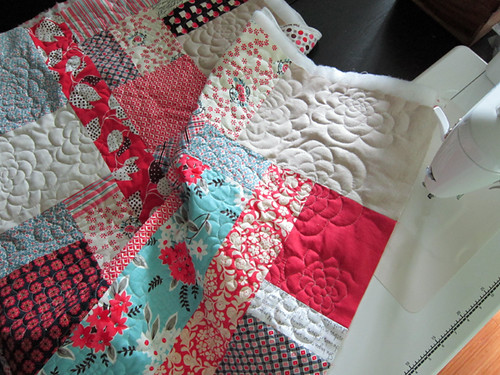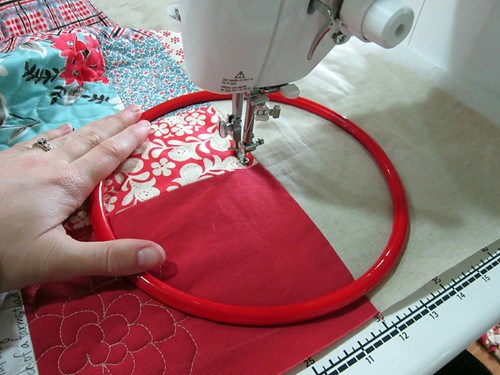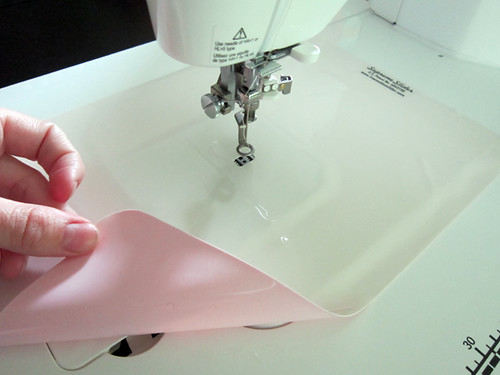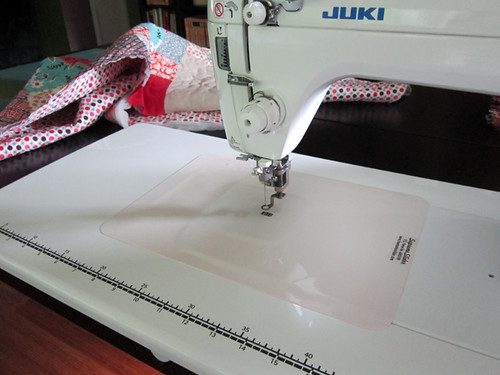Chrysanthemum Quilting tutorial
Chrysanthemum quilting is not that hard! Once you've gotten used to pacing your movement for free motion quilting, so that you feel some control and are able to make relatively even stitches, you can totally rock this. Don't be afraid!

This simple video is the easiest way to show how it works. Take a look and then practice drawing chrysanthemums on paper, especially noticing how to work with the size and shape of your petals to nest flowers close together and near the edges. As a reference point, my large chrysanthemums on the quilt are about 7" across.
After some practice on paper, give it a go with your sewing machine on a small, practice quilt sandwich. Remember to drop your feed dogs, set stitch length to zero and attach a free motion quilting foot. I used one of the hopping feet that came with my Juki sewing machine. The hopping motion is subtle, but useful as it helps the foot travel over any bulky seems. Here's how to pull up your thread tails or "bobbin thread."

On this project, I also used some free motion quilting tools from Purple Daisies. Purple Daisies is a free motion quilting (FMQ) specialty shop, offering tools and instructional DVD's for learning to FMQ. I met the owner, Cristy, at QuiltCon, where I had the chance to try out my Juki for the first time as well as a Quilt Halo and Supreme Slider. On my request, Cristy gifted these tools so I could test them out at home and share the review with you.
The Quilt Halo is that red ring. It's a heavy metal ring covered in a red plastic that's tacky so that it grips the quilt slightly. You simply set the ring on the quilt top and then move the ring to move your quilt. The idea is that the Halo keeps the quilt flat and easier to maneuver, especially on the edges where it can be hard to hold the quilt. A QuiltCon Cristy had two Halo's stacked on each other. This doubles the weight and makes them even easier to grasp.

Although I loved using the Halo at QuiltCon, it didn't work out so well at home. At QuiltCon I was working with the sewing machine set down in an inset table and only quilting on a small practice sandwich. At home without that ergonomic advantage and with a baby-sized quilt, the Halo did not seem to control well enough. As I tested different scenarios, it became clear that I prefer to grasp my quilt with both hands actually holding onto a chunk of fabric. The Quilt Halo requires that you use the "hands flat on the quilt" approach to control the quilt. Above I'm demonstrating the flat hands approach (other hand is taking the picture, but it would be on the other side of the Halo!). I find this works OK when I am making small movements like the center of the chrysanthemum, but doesn't work when my petals and movements get larger. Unfortunately, once the Halo is on you cannot take it off until you cut threads.

This is how I like to hold a quilt (other hand is taking picture!). Free motion quilting can be a head game as much as anything else. When I grab the quilt, I feel in control which helps me stay calm.
I tried using the Halo just near the edges where I often struggle to grab enough quilt to control well. Unfortunately, it didn't seem to work well with this baby-sized quilt. I did have two Halo's so I tried the double-stacked method as well. Also, the chrysanthemum pattern travels around in a big circle, bigger than the Halo. It was frustrating to keep moving the Halo so that it remained clear of the needle.

I also tried the Supreme Slider from Purple Daisies. This is a slick plastic sheet that clings to your sewing machine bed much like a vinyl decal. It peels on and off, leaving no tacky residues. There is a small rectangle cut out at center for the needle hole. I cannot overstress how easy this is to put on and take off. There's nothing to it!

If you do use a Quilt Halo, you need a slider. The Quilt Halo creates extra vertical pressure on the quilt which the slider counters by creating a slick surface. Also, if you don't use a Halo but like to use the "flat hand" approach to control your work, the Supreme Slider will totally help! Again, I tested different set ups with and without the slider, with and without the Halo, etc. My favorite set up is to grasp the quilt with two hands and use the slider. The slick surface of the Supreme Slider does help the quilt slide more smoothly, even with my hand-grabbing method, making for a calmer, more pleasant FMQing experience.
I hope I've answered all of your questions about Chrysanthemum Quilting and these tools. Let me know where I can clarify! And, thanks to Purple Daisies for making this review possible!